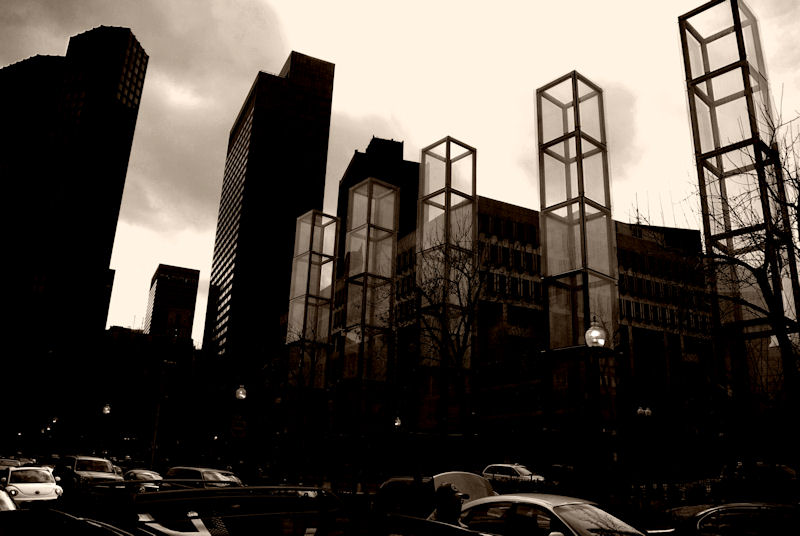
A Boston
Panic Attack

When my breathing lessons didn't end my calls home --- when they didn't even reduce their frequency --- my parents decided it was time to pay a visit. On a cool Saturday morning they picked me up at the same spot in front of my dorm where they'd dropped me off, just weeks earlier, and together we drove into Boston for the most uncomfortable tour of a city since Mussolini was dragged through Milan on a meat hook.My father parked the car in an underground garage and we walked. We started on Newbury Street, with its shoe boutiques and pearl-bedecked women window shopping; proceeded past McCloskey's orderly bronze ducklings in the Public Garden; past the sunbathers and loiterers on the Common; past the gleaming, gilded state House and brutalist city Hall; and finally made our way down the terraced slope of Government Center, where we sat to talk on a bench in the shade.
In hindsight, this was not the best place for my parents and me to stop. The shade in which we sat was cast not by trees or buildings but by the New England Holocaust Memorial, a monument which, I have always suspected, was engineered not to commemorate the greatest atrocity in human history but rather, in some perverse municipal joke or unconscionable psychological experiment, to evoke dread and fear in the minds of passersby.
The memorial consists of a line of six glass towers, each of which is five stories tall and hollow. Into the interiors of the towers, which represent the six main Nazi death camps, the numbers of all six million victims of the Holocaust have been inscribed, and all day every day an ersatz smoke rises through steel grates at the towers bases, as if to declare that even now and here, decades later and thousands of miles away, the fires of the Final Solution continue to burn.
It isn't just its design, however, gruesomely literal as that is, that makes the memorial so unsettling. It's also its location. For some bizarre, unfathomable reason, the authorities in charge decided to construct the memorial on a concrete island alongside one of the city's most congested downtown streets, just around the corner from the shopping mecca Faneuil Hall and directly opposite four --- count them, four --- Irish pubs. To be compelled in the middle of one's day to contemplate the mass immolation of one's European brethren is destabilizing. To be compelled to do so while a Paul Revere impersonator vomits in the bushes next to you is inhumane.
It is inhumane because it is liable to have appalling results. If you are already in an unsettled frame of mind, the sight and setting of the memorial could bring on a psychophysical onslaught of tremendous proportions --- a sudden, almost revelatory flash of malignant-seeming power that overturns whatever mechanisms of biochemical equilibrium you possess, causing you to sweat, gasp, cower, tremble, and shrink, and that just as suddenly wipes out all of your cherished intellectual and interpretative functions, leaving you with nothing but a devolved, bargain-basement cognition capable only of the blunt detection of bodily danger, which it always, and almost always incorrectly, finds.
In short, you might have a panic attack.
--- From Monkey Mind
Daniel Smith
©2012 Simon & Schuster